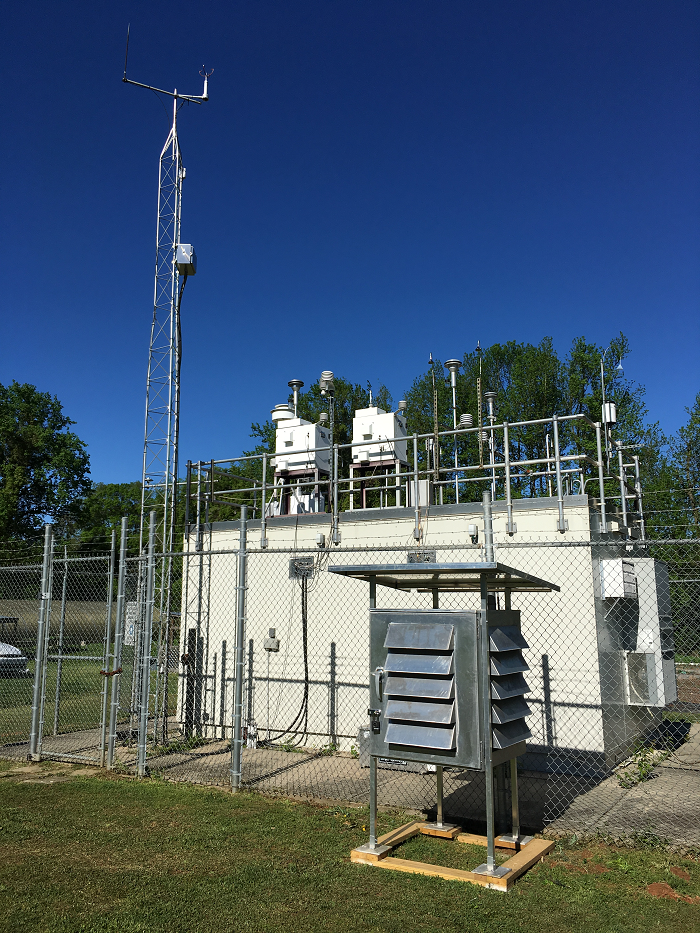Personal Air Sensors
Mecklenburg County Air Quality (MCAQ) supports the research and development of personal air sensors. Until reliability improves, this emerging technology cannot be used to drive regulatory decisions or infer health consequences. However, these sensors may help residents better-understand air quality in areas that lack a comprehensive regulatory monitoring network. Air quality in Mecklenburg County is well-understood based on data from five state-of-the-science monitoring stations that measure multiple parameters, taking hundreds of measurements daily.
Interested in a Personal Air Sensor?
A variety of devices are available with a wide range of accuracy and reliability. You can test the accuracy of your device at MCAQ's Community Science Station (CSS). The CSS is a resource for students, advocates, interested community members, and scientists to experiment with personal air sensors. The CSS provides an opportunity to evaluate sensor technology by comparing air quality senor data with data from MCAQ's quality-assured regulatory monitors. Apply for access to the CSS here.
Community scientists can reference MCAQ's Personal Air Sensor Guidance Document when choosing and siting a sensor, and to better understand data quality and sensor results.
Find an objective evaluation of devices from the Air Quality - Sensor Performance Evaluation Center (AQ-SPEC), established by the South Coast Air Quality Management District in California.
In addition, the U.S. Environmental Protection Agency (EPA) has developed an Air Sensor Toolbox for citizen scientists, researchers, and developers.

Ways to use personal air sensor technology?
Recommended Applications
Research
Objective research conducted using sensors is valuable to improve understanding of sensor accuracy. For example, MCAQ has participated in several studies to test sensor reliability. Personal air sensors were placed at MCAQ regulatory monitoring stations for a defined evaluation period. The regulatory monitor data and sensor data were compared to assess the accuracy of the sensor.
Photo: A UNCC student and MCAQ Monitoring staff member install a personal particulate matter sensor at Garinger Air Quality Monitoring Station for a collocation study.

Education
Sensors can be a valuable tool for students to connect with the environment and air quality issues. Data collection and verification also teaches the importance of protocol to control for variables and Quality Assurance/Quality Control (QA/QC) of data.
Awareness
Sensors can be an effective means to promote community awareness of air pollution sources and air quality issues.
Other ways to use personal air sensor technology?
Recommended with Reservations
Personal Exposure Monitoring
Information about the immediate environment allows an individual to make decisions to avoid problem areas. This application is recommended with the following reservations:
Most sensors haven't been validated, which means you can't assume the sensor is giving you accurate data.
Health studies do not support linking shorter term pollutant exposures, like 1-minute exposures, to adverse health effects.
For helpful guidance interpreting sensor results, view MCAQ's Personal Air Sensor Guidance Document.
Not Recommended Until Technology Improves
Source identification and characterization
Due to device limitations and questionable data quality, data from personal air sensors cannot be used to drive regulatory decisions or infer health consequences. Facilities which emit known air pollutants above levels requiring a permit from our agency are subject to periodic inspections and regular monitoring, recordkeeping and reporting to ensure ongoing compliance with permit limits. View records for air permitted facilities in Mecklenburg County.
Supplementing existing monitoring data
State, local, and federal agencies operate a network of monitoring stations to establish compliance with the National Ambient Air Quality Standards (NAAQS). Data used to determine compliance with the NAAQS must be collected from a monitor approved as a Federal Reference Method or Federal Equivalent Method using established quality procedures.

